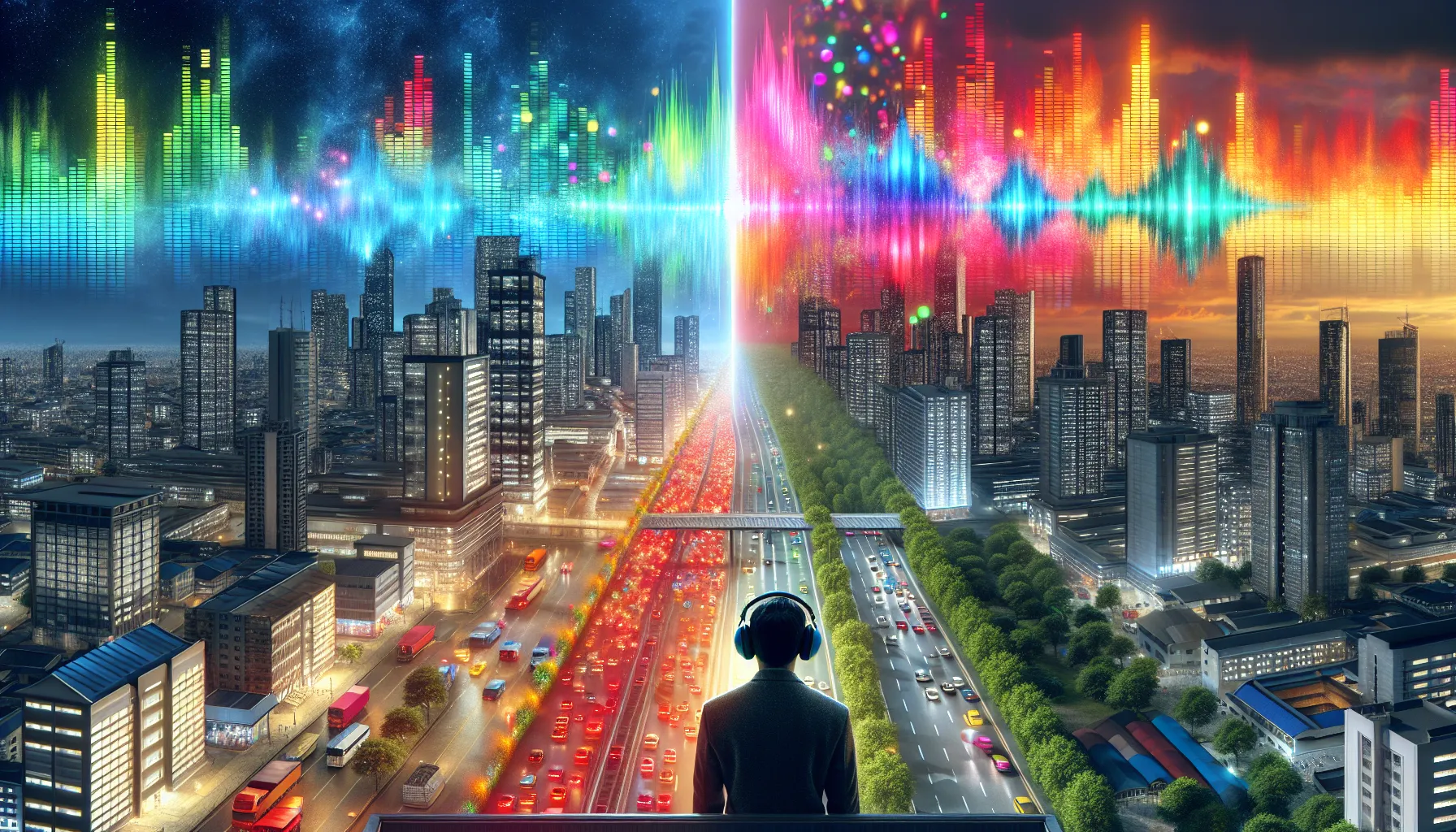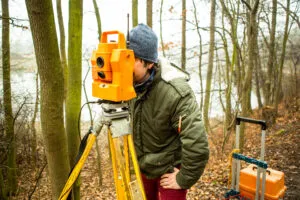
Noise pollution is a growing concern in urban environments, affecting the quality of life and health of residents. As cities expand and human activities intensify, the need for accurate noise mapping becomes increasingly crucial. Noise mapping provides a visual representation of sound levels in an area, helping communities and policymakers understand and address noise-related issues effectively.
This article guides readers through the process of creating accurate noise maps for their area. It explores the impact of noise pollution, outlines data collection methods, and explains how to develop and interpret noise maps. By following these steps, individuals and organizations can gain valuable insights into local noise levels, identify problem areas, and implement targeted solutions to improve the acoustic environment in their communities.
Understanding Noise Pollution and its Impact
Noise pollution is a pervasive environmental threat that has a significant impact on human health and well-being. It occurs when unwanted sounds enter the environment, causing disturbances and potential health risks. The World Health Organization (WHO) considers noise pollution one of the most dangerous environmental threats to health, with harmful effects occurring at levels exceeding 75 decibels (dB).
Types of environmental noise pollution
Various sources contribute to noise pollution in urban and rural areas. The primary culprits include:
- Traffic noise: Road traffic, railways, and air transportation are major contributors to urban noise.
- Industrial activities: Construction sites, factories, and other industrial operations generate significant noise levels.
- Recreational activities: Loud music from concerts, bars, and nightlife venues can create noise disturbances.
- Animals: Everyday noises that can be overlooked such as dogs barking at the mailman can also be considered a disturbance.
Health effects of noise pollution
The impact of noise pollution on human health is far-reaching and can lead to various physical and psychological issues:
- Hearing impairment: Prolonged exposure to high noise levels can cause noise-induced hearing loss, tinnitus, and hyperacusis.
- Cardiovascular problems: Noise pollution has been linked to an increased risk of hypertension, heart disease, and stroke.
- Sleep disturbances: Nighttime noise can disrupt sleep patterns, leading to fatigue, irritability, and decreased cognitive performance.
- Mental health issues: Chronic exposure to noise can contribute to stress, anxiety, and depression.
- Cognitive impairment: Children exposed to high levels of noise may experience learning difficulties and delayed cognitive development.
Economic impact of noise pollution
The economic consequences of noise pollution are substantial and often underestimated. Some key economic impacts include:
- Healthcare costs: Treating noise-related health issues places a significant burden on healthcare systems.
- Productivity loss: Sleep disturbances and cognitive impairments caused by noise can lead to decreased work productivity.
- Property values: Areas with high noise pollution often experience decreased property values.
- Wildlife impact: Noise pollution affects animal behavior and can lead to ecological imbalances, potentially impacting industries reliant on natural resources.
Understanding the various aspects of noise pollution is crucial for developing effective noise mapping strategies. By identifying the sources, health effects, and economic impacts of noise pollution, communities can better address this environmental challenge and work towards creating quieter, healthier living environments.
Environmental noise mapping
A comprehensive noise map consists of several essential elements:
- Noise sources: These include various contributors to noise pollution such as road traffic noise, railways, industrial activities, and aircraft.
- Geographical data: Information about the terrain, industrial facilities, and other physical structures that can affect noise propagation is crucial.
- Calculation methods: Standardized algorithms are used to predict noise emissions based on source characteristics and environmental factors.
- Noise indicators: Long-term averaged sound levels, typically measured in A-weighted decibels (dBA), are used to represent noise exposure.
- Grid of receivers: A network of points where noise levels are calculated or measured is established across the area of interest.
- Visualization tools: Geographic Information System (GIS) software is often used to create the final map, applying spatial interpolation to produce a continuous representation of noise levels.
- Exposure data: The number of people exposed to different noise levels is an important component, often calculated using facade sound levels of buildings.
By incorporating these elements, noise mapping provides a powerful tool for understanding and addressing noise pollution in urban environments. It allows for the assessment of current noise levels, prediction of future scenarios, and development of targeted strategies to improve the acoustic environment for residents.
Data Collection Techniques for Accurate Noise Mapping
Accurate noise mapping relies on robust data collection techniques. These methods have evolved significantly, incorporating advanced technologies and innovative approaches to capture comprehensive noise data. This section explores three primary techniques used in noise mapping: mobile noise monitoring, fixed sensor networks, and crowdsourced noise data.
Mobile noise monitoring
Mobile noise monitoring has become an increasingly popular method for collecting noise data across large geographical areas. This technique involves using portable devices to measure noise levels while in motion. Researchers have employed various modes of transportation, including bicycles and walking, to carry out mobile monitoring.
One advantage of mobile monitoring is its ability to provide higher spatial resolution compared to stationary methods. However, it typically offers lower temporal resolution due to the short duration of measurements at each location. To ensure accuracy, data collectors must move at a relatively slow pace, as high-speed movements can generate additional noise that affects the measurements.
Recent advancements in smartphone technology have expanded the possibilities for mobile noise monitoring. Several mobile applications supporting noise measurement have emerged, making it easier for individuals to contribute to noise mapping efforts. However, it’s important to note that the accuracy of smartphone-based noise measurements is generally lower than that of professional sensors.
Fixed sensor networks
Fixed sensor networks, also known as stationary noise monitoring stations, provide highly accurate noise data with excellent temporal resolution. These networks consist of permanently installed noise sensors at strategic locations throughout the study area. They offer continuous monitoring capabilities, allowing for the collection of long-term noise data.
While fixed sensor networks excel in providing detailed temporal information, they have limitations in terms of spatial coverage. The high construction and maintenance costs associated with these stations often restrict their deployment to a limited number of locations. As a result, they may not capture the full range of noise variations across an entire urban area.
To address this limitation, some researchers have proposed combining fixed sensor networks with mobile monitoring techniques. This hybrid approach aims to leverage the strengths of both methods, providing a more comprehensive picture of the noise environment.
Crowdsourced noise data
Crowdsourcing has emerged as a promising approach to noise data collection, offering a cost-effective way to gather large-scale noise information. This method involves engaging citizens to contribute noise measurements using their smartphones or other personal devices.
The advantages of crowdsourced noise data include its potential for wide spatial coverage and the ability to collect data continuously. By leveraging the ubiquity of smartphones, crowdsourcing can significantly increase the density of measurement points across a given area.
However, crowdsourced data comes with its own set of challenges. The quality and reliability of measurements can vary widely due to factors such as device inconsistencies, user errors, and environmental variables. To address these issues, researchers have developed various quality control methods, including machine learning algorithms, to identify and filter out noisy or inaccurate data points.
Despite these challenges, crowdsourcing has shown promise in enhancing traditional noise mapping processes. It has the potential to produce dynamic noise maps that reflect real-time changes in the acoustic environment, providing valuable insights for urban planning and noise management strategies.
Advanced Mapping Technologies and Software
The field of noise mapping has experienced significant advancements in recent years, with cutting-edge technologies and software solutions revolutionizing the way professionals approach environmental noise assessment. These innovations have enhanced the accuracy, efficiency, and scope of noise mapping projects, providing valuable insights for urban planning and noise mitigation strategies.
3D noise modeling
Three-dimensional noise modeling has become an essential tool in creating comprehensive and accurate noise maps. This technology allows for the visualization of noise propagation in complex urban environments, taking into account factors such as building heights, terrain features, and noise barriers. Advanced software applications like CadnaA and SoundPLAN offer powerful 3D noise mapping capabilities, enabling users to create detailed simulations of noise distribution across various landscapes.
These 3D models provide a more realistic representation of noise pollution, as they consider the vertical dimension of sound propagation. This has a significant impact on the assessment of noise pollution, especially in areas with tall buildings or varying topography. By incorporating 3D modeling, noise mapping professionals can better understand how noise travels through urban canyons, reflects off surfaces, and affects different floors of buildings.
Machine learning in noise prediction
The integration of machine learning algorithms has brought about a paradigm shift in noise prediction techniques. These advanced computational methods have the ability to analyze vast amounts of data and identify patterns that might be overlooked by traditional modeling approaches. Machine learning models can process historical noise data, along with various environmental and urban factors, to make more accurate predictions of future noise estimation levels.
One notable application of machine learning in noise mapping has been demonstrated at the National Synchrotron Radiation Research Center (NSRRC). Researchers utilized a gradient boosting model (GBM) to predict noise equivalent levels (Leq) with remarkable accuracy. The model incorporated various features, including time-related data and historical noise measurements, to forecast future noise pollution levels. This approach has shown promise in providing early warnings to workers in high-noise environments, potentially preventing long-term exposure to harmful noise levels.
Cloud-based mapping platforms
Cloud computing has transformed the landscape of noise mapping software, offering unprecedented accessibility and collaborative capabilities. Cloud-based platforms allow users to access powerful noise modeling tools and vast datasets from anywhere, using any device with an internet connection. This has democratized the field of noise mapping, making it possible for a wider range of professionals to engage in environmental noise assessment.
These platforms often integrate real-time data collection, analysis, and visualization capabilities. For instance, some solutions offer the ability to connect noise monitoring devices directly to the cloud, enabling continuous data streaming and immediate analysis. This real-time approach has a significant impact on noise pollution management, allowing for rapid response to changing noise conditions and more effective implementation of noise control measures.
Moreover, cloud-based mapping platforms facilitate collaboration among team members and stakeholders. Multiple users can work on the same project simultaneously, sharing data, analysis results, and visualizations seamlessly. This collaborative environment enhances the efficiency of noise mapping projects and promotes knowledge sharing among professionals in the field.
Challenges and Solutions in Noise Mapping
Dealing with complex urban environments
Urban environments present unique challenges for noise mapping due to their intricate layouts and diverse noise sources. The complex interplay of buildings, streets, and various activities makes it difficult to accurately capture and represent noise levels. One significant obstacle has been the inability of traditional noise mapping methods to account for the multifaceted nature of urban soundscapes.
To address this issue, researchers have developed advanced 3D noise modeling techniques. These models take into consideration factors such as building heights, terrain features, and noise barriers, providing a more realistic representation of noise propagation in urban development. By incorporating these elements, noise mapping professionals can better understand how sound travels through urban canyons, reflects off surfaces, and affects different floors of buildings.
Accounting for temporal variations
Another challenge in noise mapping has been capturing the temporal variations in noise levels. Traditional approaches often rely on average noise exposure over extended periods, which fail to reflect the dynamic nature of urban soundscapes. This limitation has made it difficult to assess the impact of intermittent noise sources and their effects on public health and well-being.
To overcome this obstacle, researchers have proposed new metrics that consider the temporal structure of noise exposure. These include the introduction of thresholds, counting the number and duration of noise events, and applying level statistics. One promising approach is the intermittency ratio (IR), which quantifies the intermittence of noise sources and can be calculated for any transportation noise source and time period.
Ensuring data accuracy and reliability
The accuracy and reliability of noise mapping data have been ongoing concerns in the field. Traditional methods often rely on limited sampling or predictive models, which may not capture the full complexity of noise pollution in urban areas. This has led to challenges in producing noise maps that truly reflect the acoustic environment experienced by residents.
To enhance data accuracy and reliability, researchers have explored innovative data collection techniques. Mobile noise monitoring, using portable devices carried by individuals or mounted on vehicles, has emerged as a promising approach. This method allows for higher spatial resolution compared to stationary measurements, providing a more comprehensive picture of noise distribution across urban areas.
Additionally, the integration of machine learning algorithms has revolutionized noise prediction techniques. These advanced computational methods can analyze vast amounts of data and identify patterns that might be overlooked by traditional modeling approaches. By incorporating historical noise data and various environmental factors, machine learning models can make more accurate predictions of future noise levels.
As noise mapping techniques continue to evolve, addressing these challenges will be crucial in producing more accurate and reliable noise maps. These advancements will enable urban planners, policymakers, and researchers to better understand and mitigate the effects of noise pollution on public health and quality of life in complex urban environments.
Conclusion
The creation of accurate noise maps has a significant impact on our understanding and management of urban soundscapes. By combining advanced technologies like 3D modeling, machine learning, and cloud-based platforms with innovative data collection methods, we’ve made great strides in capturing the complex nature of noise pollution. These tools enable us to paint a more realistic picture of how sound travels through our cities, helping urban planners and policymakers to make informed decisions to improve quality of life.
Looking ahead, the field of noise mapping continues to evolve, offering exciting possibilities to tackle noise pollution more effectively. As we refine our techniques to deal with complex urban environments, account for temporal variations, and ensure data reliability, we’re paving the way for quieter, more livable cities. The ongoing advancements in this field not only enhance our ability to monitor and predict noise levels but also empower communities to take an active role in shaping their acoustic environments.
FAQs
Q: How is noise mapping created?
A: Creating a noise map involves several steps using OpenStreetMap (OSM) data. First, retrieve the OSM data, then visualize it. Next, generate a receiver table and associate emission noise levels with roads. After that, manage the propagation from the source to the receiver, create isosurfaces maps, and finally, view the results.
Q: What does the noise mapping process entail?
A: Noise mapping is the process of creating a visual representation of noise levels across a specific area, typically a workplace. This is done by using contour maps that are often color-coded to show different noise intensities and frequencies. These maps are overlaid on a layout of the area to provide a clear depiction of noise distribution.
Q: What tools are used to measure noise pollution in a specific location?
A: To measure noise pollution, commonly used instruments include the sound level meter (SLM), the integrating sound level meter (ISLM), and the noise dosimeter. Each of these tools helps in assessing different aspects of noise levels in an environment.
Q: What are the conventional methods used in noise mapping?
A: Traditional noise mapping typically involves computer simulations. These simulations consider various noise sources and how noise propagates to the receiver points in the mapped area.


